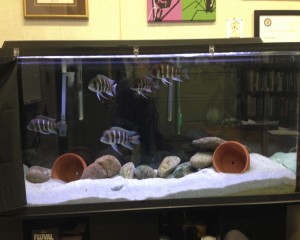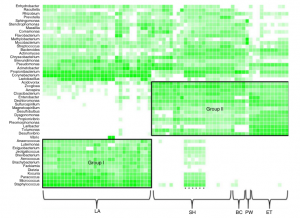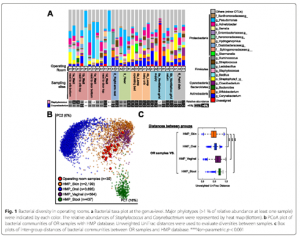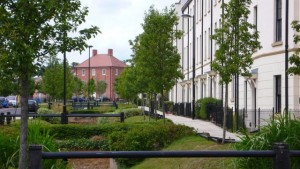Introduction In 2013-2014, a metagenomics project called “Pathomap” collected 1,457 swab samples from the surfaces of all active subway stations throughout New York City (NYC), as well as samples from the Gowanus Canal and several parks. Each sample was sequenced to an average depth of 3.6 million reads (paired-end 125 nucleotides), generating a city-wide metagenomic …
Let’s face it, when microbiologists get together over beers 9/10 times the conversation ends up about poop. Or maybe that’s just among the ones I know? Feces provides the critical window into the important world of the gut microbiome, a large percentage of the biomass in feces is microbial and who doesn’t love fecal transplants? …
Behind the scenes: Microbial biogeography of a university campus My name is Ashley Ross (@ashanneross) and, during my final year as an undergraduate student in the Department of Biology at the University of Waterloo, I began to wonder which microorganisms I was contacting on a daily basis while on campus. Every day on my way …
Blog post prepared jointly by Andrew Doxey (@acdoxey) and Josh Neufeld (@joshdneufeld) The “aquariome” Back in 2013, as part of a project assessing aquarium microbial communities and their role in nutrient cycling, Laura Sauder (graduate student in the Neufeld lab) sequenced a shotgun metagenomic library from a freshwater aquarium biofilter that was installed on this …
Designers Martin Krzywinski and Barbara Jeannie Hunnicutt provide a peek behind the scenes, and explain how they developed a data visualization based on bacterial genome information derived from dust. Source: The Evolution of a Scientific American Infographic: Secret Life in Household Dust – Scientific American Blog Network This is an absolutely fascinating look behind the …
As buildings move forward in an attempt to become more “green,” it is important to continue to assess how the microbiology changes with these new systems. A recent study from Keely et al used high-throughput pyrosequencing to look at what microbes live in the different points in grey water systems. The sampling efforts were split into …
Infants born via c-section have a microbiome community composed mostly of skin bacteria [1-3], but the source of these skin bacteria is unknown. People quickly shed bacteria into their environment, leaving their own bacterial signature in a room within hours [4]. Do hospital operating rooms harbor skin bacteria that could colonize c-section delivered infants? A …
Adding to the list of common surfaces in the built environment that are harboring unique microbial communities — solar panels! If you build a smooth surface exposed to the sun, will they come, like poolside sunbathers vying for the best lounge chairs? A study by Pedro Dorado-Morales and crew came at this question from multiple sides: they …
Did you know that NASA took on the project of creating the world’s greenest building? It’s called Sustainability Base and it’s located right in the heart of Silicon Valley. It boasts incredible energy efficiency and often puts energy back into the grid. And as it’s website says, it’s claimed to have been built to be “furnished …
A blog post from the Scottish Wildlife Trust by Ed Taylor discusses the importance of greenspace in Scotland’s suburban and urban areas. It’s part of a “50 for the Future” series that suggests 50 things that should occur in Scotland over the next 50 years to benefit both people and wildlife. As suburban areas are …






